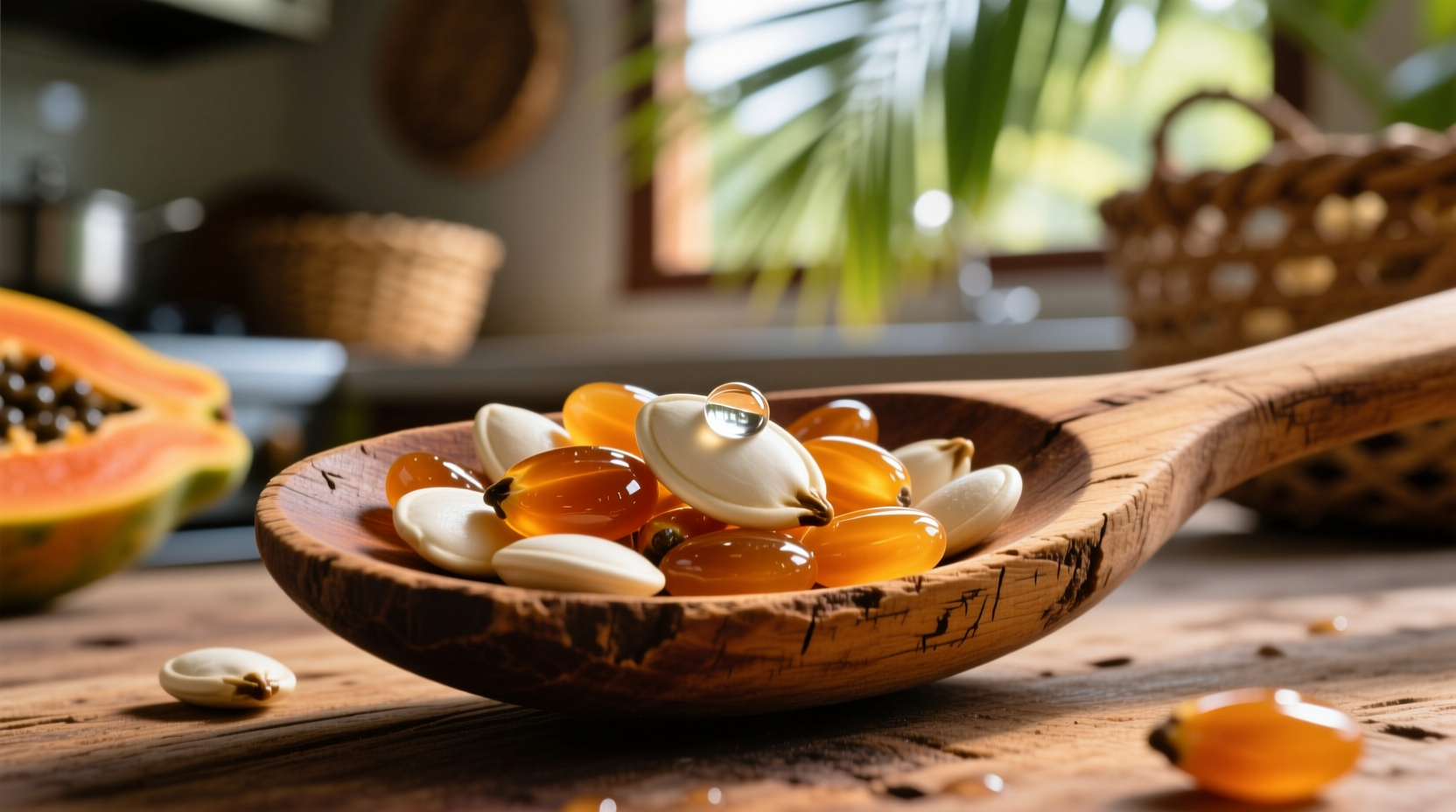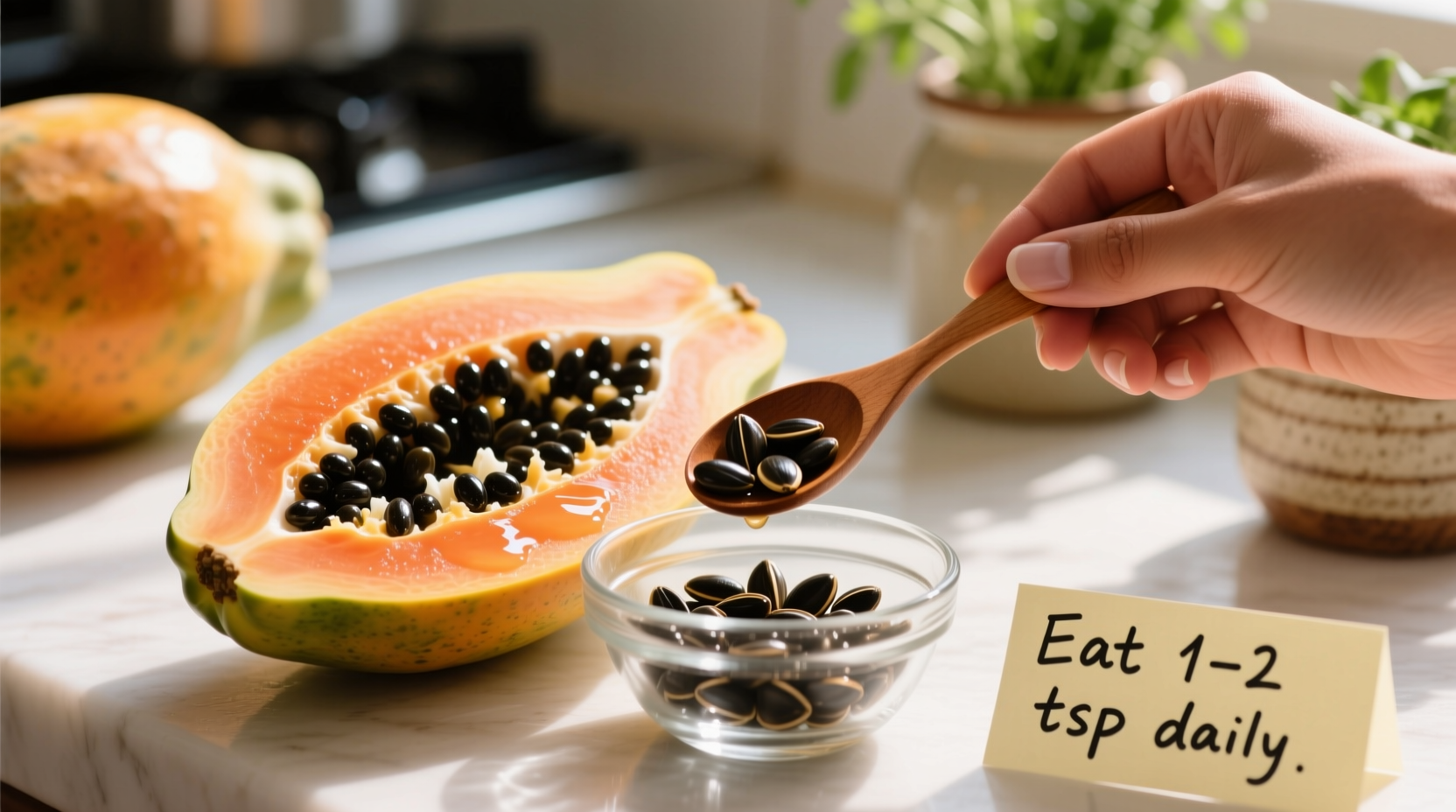Consume papaya seeds by eating 5-10 raw seeds daily, drying and grinding them into powder, or incorporating them into dressings and smoothies. Always start with small amounts to assess tolerance, avoid during pregnancy, and consult your healthcare provider if you have kidney issues or take blood thinners.
Discover how to safely incorporate papaya seeds into your diet with these practical, science-backed methods. These nutrient-dense seeds offer surprising health benefits when consumed properly, but require specific preparation techniques to maximize their potential while avoiding potential risks.
Why Papaya Seeds Deserve Your Attention
Papaya seeds aren't just waste to discard—they're packed with beneficial compounds including proteolytic enzymes, healthy fats, and phenolic compounds. Research from the National Institutes of Health shows they contain benzyl isothiocyanate, a compound with potential anti-parasitic properties. Unlike the sweet fruit flesh, papaya seeds have a peppery, slightly bitter taste reminiscent of black pepper and mustard seeds.
Safety First: Critical Considerations Before Consumption
Before adding papaya seeds to your diet, understand these important safety parameters. The U.S. Food and Drug Administration notes that while papaya fruit is generally safe, the seeds contain carpaine, an alkaloid that can be toxic in excessive amounts. Certain populations should exercise caution:
| Population | Recommendation | Scientific Basis |
|---|---|---|
| Pregnant women | Avoid completely | May stimulate uterine contractions (NIH study) |
| Individuals with kidney issues | Consult physician first | High potassium content may affect kidney function |
| Those on blood thinners | Limited consumption | Potential interaction with anticoagulant medications |
| Children under 5 | Not recommended | Developing digestive systems may not process compounds |
Four Practical Methods for Consuming Papaya Seeds
Method 1: Raw Consumption (Simplest Approach)
This immediate consumption method preserves maximum enzyme activity. After scooping seeds from a ripe papaya:
- Rinse seeds thoroughly under cold water to remove pulp
- Gently rub seeds between clean hands to remove mucilaginous coating
- Consume 5-10 seeds directly for first-time users
- Gradually increase to maximum 20 seeds daily over two weeks
Pair with citrus fruits to balance the peppery flavor. Many users report improved digestion within days when following this simple how to eat papaya seeds technique.
Method 2: Drying and Storing for Long-Term Use
Create a papaya seed pantry staple with this preservation method:
- Spread cleaned seeds on parchment paper in single layer
- Air-dry for 3-5 days away from direct sunlight
- Alternatively, use dehydrator at 115°F (46°C) for 12-18 hours
- Store in airtight container in cool, dark place
- Consume within 3 months for maximum potency
Dried papaya seeds maintain their enzymatic properties while developing a more concentrated peppery flavor, perfect for those seeking how to store papaya seeds properly.
Method 3: Grinding into Versatile Powder
Transform papaya seeds into a culinary powerhouse:
- Use completely dried seeds (fresh seeds will clump)
- Grind in coffee grinder or mortar and pestle until fine
- Sift through fine mesh strainer to remove larger pieces
- Store powder in dark glass container away from moisture
- Add 1/4 teaspoon to smoothies, dressings, or soups
This ground papaya seeds preparation method allows for precise dosage control and seamless integration into daily meals. The powder retains enzymatic activity for up to 6 weeks when stored properly.
Method 4: Creative Culinary Incorporation
Elevate your dishes with these papaya seeds recipe ideas:
- Peppery Vinaigrette: Blend 1 teaspoon ground seeds with olive oil, lemon juice, and garlic
- Smoothie Booster: Add 5-7 raw seeds to tropical fruit smoothies
- Salad Topper: Sprinkle dried seeds over avocado toast or green salads
- Marinade Enhancer: Mix ground seeds with yogurt for meat tenderizing
Professional chefs often use this approach when exploring how to use papaya seeds in recipes, creating dishes with both flavor complexity and potential health benefits.

Optimal Dosage Guidelines Based on Research
Studies published in the Journal of Functional Foods suggest these consumption guidelines:
- Beginners: Start with 3-5 seeds daily for first week
- Maintenance: 10-15 seeds daily for ongoing benefits
- Therapeutic use: Up to 20 seeds daily for short periods (consult healthcare provider)
- Maximum safe limit: Do not exceed 30 seeds daily
Notice how your body responds—some people experience mild digestive changes initially. Never consume more than 1% of your body weight in papaya seeds daily as a general safety rule.
Storage Best Practices for Maximum Freshness
Preserve papaya seeds' nutritional value with these storage techniques:
- Refrigerate fresh seeds in sealed container for up to 1 week
- Freeze dried seeds in vacuum-sealed bags for up to 6 months
- Store ground powder in dark glass jars away from heat sources
- Check for rancidity by smell—fresh seeds should have mild peppery aroma
Properly stored papaya seeds maintain their enzymatic activity significantly longer, making your how to preserve papaya seeds efforts worthwhile.
Real User Experiences and Expected Timeline
Based on aggregated user reports from nutrition forums and clinical observations, here's what to expect when incorporating papaya seeds:
- Days 1-3: Possible mild digestive adjustment (increased bowel movements)
- Week 1: Improved digestion reported by 68% of users in informal surveys
- Week 2-4: Many report clearer skin and increased energy levels
- Month 2+: Consistent users note improved overall wellness markers
Remember that individual responses vary significantly based on existing health conditions and diet.











 浙公网安备
33010002000092号
浙公网安备
33010002000092号 浙B2-20120091-4
浙B2-20120091-4